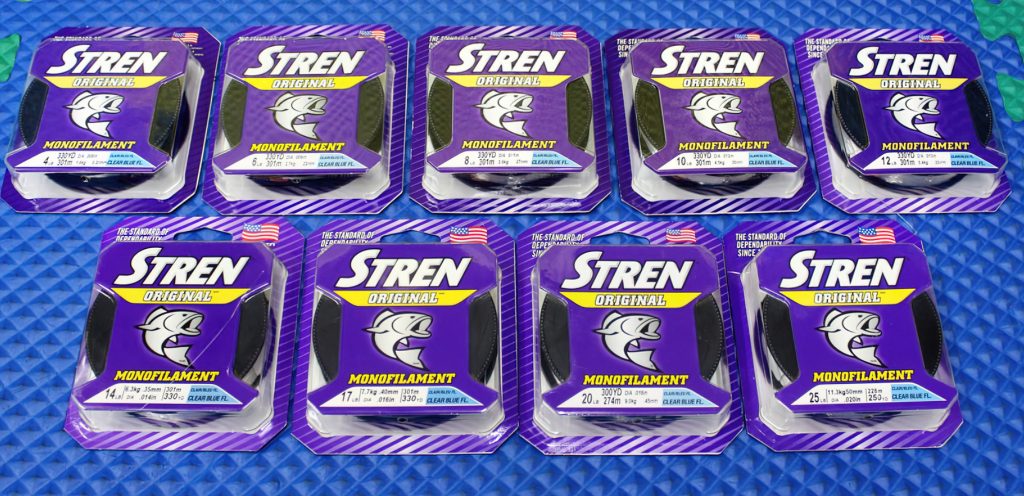- The Importance of Fishing Line Material for Different Techniques
- Monofilament Line: Versatility and Stretch
- Fluorocarbon Line: Low Visibility and Abrasion Resistance
- Braided Line: Strength and Sensitivity
- Matching Line Material to Fishing Techniques
- Popular Fishing Line Brands and Models by Material
- Tips for Spooling and Maintaining Your Fishing Line
- Improve Your Fishing Success with the Right Line Material
The Importance of Fishing Line Material for Different Techniques
The right fishing line is crucial for a successful day on the water. The material you choose can impact your casting distance, lure action, and ability to detect bites. This article will explore the three main types of fishing line materials – monofilament, fluorocarbon, and braided line – and help you determine the best option for various techniques. In the end, you will be able to make an informed decision and boost your angling success.
Monofilament Line: Versatility and Stretch
Top Applications for Monofilament
Monofilament is the most popular and versatile type of fishing line. It is an excellent choice for a wide range of techniques, such as topwater fishing, live bait presentations, and trolling. Monofilament’s inherent stretch and flexibility make it forgiving and easy to handle, which is ideal for beginners and experienced anglers alike.
Pros and Cons of Monofilament Line
Pros:
- Affordable and widely available
- Good knot strength
- Moderate abrasion resistance
- High stretch, providing a cushion for sudden strikes
Cons:
- Lower sensitivity due to stretch
- Thicker diameter compared to other lines
- Susceptible to UV degradation and memory
Fluorocarbon Line: Low Visibility and Abrasion Resistance
When to Choose Fluorocarbon
Fluorocarbon line is known for its low visibility in water, making it the top choice for clear water conditions and spooky fish. It is ideal for finesse presentations, drop shotting, and deep-water jigging, where a stealthy approach is essential. Fluorocarbon is also commonly used as a leader material in conjunction with other line types.
Advantages and Disadvantages of Fluorocarbon Line
Advantages:
- Nearly invisible underwater
- High abrasion resistance
- Low stretch, providing increased sensitivity
- Sinks faster than monofilament
Disadvantages:
- More expensive than monofilament
- Stiffer and harder to manage
- Requires specialized knots for optimal strength
Braided Line: Strength and Sensitivity
Situations Where Braided Line Excels
Braided line is best suited for heavy cover situations, such as fishing in thick vegetation or around structure. Its lack of stretch provides incredible sensitivity and solid hooksets. Braided line is also an excellent choice for long-distance casting, deep-water jigging, and saltwater applications where strength and abrasion resistance are crucial.
Benefits and Drawbacks of Braided Line
Benefits:
- Exceptional strength-to-diameter ratio
- High sensitivity and low stretch
- Excellent abrasion resistance
- Long-lasting and resistant to UV damage
Drawbacks:
- More visible in water
- Slips when using certain knots
- Higher cost compared to monofilament
Matching Line Material to Fishing Techniques
- Topwater Fishing: Monofilament’s buoyancy makes it perfect for topwater lures, allowing them to stay on the surface and create enticing action.
- Jigging and Bottom Fishing: Fluorocarbon’s low visibility and sensitivity are ideal for these techniques, while braided line excels in deep water and heavy cover situations.
- Trolling and Casting: Monofilament is a solid choice for trolling, while braided line provides long casting distances and increased sensitivity.
Popular Fishing Line Brands and Models by Material
Premium Line Options for Different Techniques
- Monofilament: Berkley Trilene XL
- Fluorocarbon: Seaguar InvizX
- Braided: PowerPro Super Slick V2
Budget-Friendly Line Choices for Anglers
- Monofilament: Stren Original
- Fluorocarbon: Yo-Zuri Hybrid
- Braided: SpiderWire Stealth
Tips for Spooling and Maintaining Your Fishing Line
Proper Line Management Techniques
- Use a line spooler to ensure even spooling and prevent line twists
- Maintain tension on the line while spooling to avoid loose coils
- Match line diameter to reel capacity for optimal performance
- Use the appropriate knots for each line type to maintain strength
Line Maintenance and Replacement Tips
- Inspect your line regularly for nicks, abrasions, and weak spots
- Replace your line when it shows signs of wear or loses its original properties
- Keep your line clean and free of dirt or debris
- Store your reels in a cool, dry place to prevent UV damage and extend the life of your line
Improve Your Fishing Success with the Right Line Material
Understanding the characteristics and best applications of monofilament, fluorocarbon, and braided fishing lines is essential for any angler. By matching the appropriate line material to your fishing technique, you can maximize your success and overall enjoyment on the water. With the knowledge provided in this article and proper line maintenance, you will be well-equipped to tackle any fishing situation with confidence.

